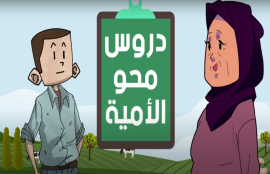- Days
- Hours
- Minutes
- Seconds
Project « Land Productivity »
Land Governance
The "Land Governance" activity, whose budget is in the order of $9,9 million, aims to provide support to the…
Read more...Rural Land
The "Rural land" activity, with a budget of some $32,8 million and the purpose of which is the melkisation of…
Read more...
Issue:
Difficulty in accessing land has been identified as a major constraint to investment in all productive sectors, particularly in the industrial and agricultural sectors. This situation, characterized by a governance deficit, is attributable to legal, institutional and managerial constraints, which are hampering the deployment of an integrated land policy capable of guaranteeing the optimization of land resources and meeting the current and future needs of investors. At the industrial level, weak governance has resulted in insufficient levels of valuation of industrial zones, in insufficient supply and subject to speculation and in the inadequacy of the supply to the needs of investors. On the other hand, the low productivity of agricultural land finds its origin, amongst other things, in the multiplicity of legal statuses, fragmentation and the issues of joint ownership.
Goal :
The "Land Productivity" project, with a budget of $ 170 million, aims to improve the land governance and productivity to better meet the needs of investors and attract more investment.
Consistency:
The "Land Productivity" project is structured around three activities:
- "Land Governance"
- "Industrial Land"
- "Rural Land"
* The "Land Governance" activity ($ 10.5 million) will support the Government in:
- The development of a national land strategy and an action plan for its implementation, according to a participatory approach promoting consensus building and the ownership of this strategy by all actors;
- The implementation of the priority actions of the said action plan.
* The “Industrial Land” activity ($ 127 million) focuses on the implementation of three components:
- Providing technical assistance to stakeholders, in particular the Ministry of Industry, in the design and implementation of a new model for the planning, development and management of industrial zones;
- The design of a new model for the development of sustainable industrial parks and the revitalization of existing industrial zones driven by market demands and encouraging public-private partnerships and environmental and social sustainability. This model will be implemented on a pilot basis in three industrial zones in the Casablanca-Settat Region;
- The establishment of the fund for sustainable industrial zones (FONZID) aimed at supporting projects improving the governance and sustainability of existing or new industrial zones.
* The "Rural land" activity ($ 33 million) aims at the implementation of a “melkisation”’s pilot operation of collective land located in irrigation perimeters and governed by Dahir no. 1-69-30 of July 25, 1969, using an optimized and simplified procedure. This “melkisation” operation consist in the transformation of joint ownership of this land into private properties for the benefit of rights holders. This operation will be implemented, on a pilot basis, over an area of 66,000 Ha of collective land within irrigation perimeters of Gharb (51,000 Ha) and Haouz (15,000 Ha). To maximize the benefits of this pilot “melkisation” operation, accompanying measures are being considered. These measures include facilitating access to finance for investment and development of land, functional literacy, strengthening farmer’s technical and professional capacities and developing income-generating activities and jobs, especially for women and youths.




